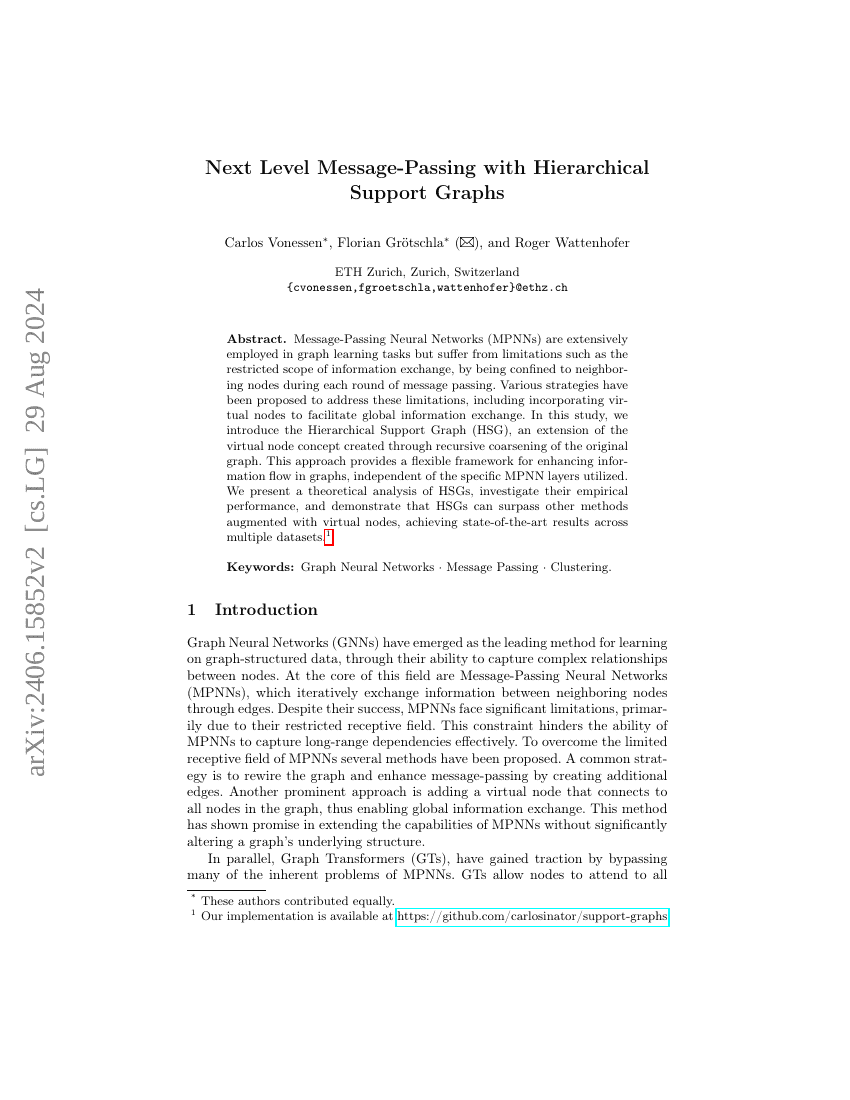Command Palette
Search for a command to run...
Carlos Vonessen; Florian Grötschla; Roger Wattenhofer

Abstract
Message-Passing Neural Networks (MPNNs) are extensively employed in graph learning tasks but suffer from limitations such as the restricted scope of information exchange, by being confined to neighboring nodes during each round of message passing. Various strategies have been proposed to address these limitations, including incorporating virtual nodes to facilitate global information exchange. In this study, we introduce the Hierarchical Support Graph (HSG), an extension of the virtual node concept created through recursive coarsening of the original graph. This approach provides a flexible framework for enhancing information flow in graphs, independent of the specific MPNN layers utilized. We present a theoretical analysis of HSGs, investigate their empirical performance, and demonstrate that HSGs can surpass other methods augmented with virtual nodes, achieving state-of-the-art results across multiple datasets.
Code Repositories
Benchmarks
| Benchmark | Methodology | Metrics |
|---|---|---|
| graph-classification-on-peptides-func | GatedGCN-HSG | AP: 0.6866±0.0038 |
| graph-property-prediction-on-ogbg-molpcba | GatedGCN-HSG | Test AP: 0.3129±0.0020 |
| graph-regression-on-peptides-struct | GatedGCN-HSG | MAE: 0.2421±0.0007 |
| node-classification-on-coco-sp | GatedGCN-HSG | macro F1: 0.3535±0.0032 |
| node-classification-on-pascalvoc-sp-1 | GatedGCN-HSG | macro F1: 0.4604±0.0059 |
Build AI with AI
From idea to launch — accelerate your AI development with free AI co-coding, out-of-the-box environment and best price of GPUs.